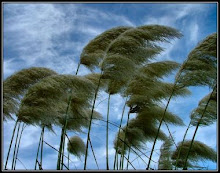Mount Ciremei
 Mount Ciremei is highpoints West Java (3078 mdpl), can seen clearly by passengers trains or vehicles other generally along lane Pantura approximately Cirebon. To toward peak Ciremei there 3 pathway can pursued namely lane Majalengka lane Palutungan and lane Linggarjati. Path Linggarjati represents most precipitous and heaviest, but this pathway represents most frequently traveled climbers.
Mount Ciremei is highpoints West Java (3078 mdpl), can seen clearly by passengers trains or vehicles other generally along lane Pantura approximately Cirebon. To toward peak Ciremei there 3 pathway can pursued namely lane Majalengka lane Palutungan and lane Linggarjati. Path Linggarjati represents most precipitous and heaviest, but this pathway represents most frequently traveled climbers. Mount Ceremai has distinctive compared mountains else in Java. This mountain situated far apart from mountain other higher and sides is the sea Java. Trip to G. Ceremai can begins from terminals Cirebon, climbed bus toward Kuningan and alight at Cilimus. From Cilimus we connect with vehicles colt or ojek to village Linggarjati.
Mount Ceremai has distinctive compared mountains else in Java. This mountain situated far apart from mountain other higher and sides is the sea Java. Trip to G. Ceremai can begins from terminals Cirebon, climbed bus toward Kuningan and alight at Cilimus. From Cilimus we connect with vehicles colt or ojek to village Linggarjati.In villages Linggarjati, we can staying at Hotel Linggarjati. From hotels Linggarjati we continue journey through buildings Scriptwriter westward until approximately Balai Desa Linggarjati. Here we meet someone former climbers or precisely caretaker, Experienced named pak Ahmad, who because age now he experiencing disturbances eyesight. Photo caretaker mountain Ciremai a respected.
 From here we walked straight and will meet pinery, ago we will until on roads branched, called Cibunar. In this place we can founded tents because availableOne wellspring. Travel continued with selecting road left toward mountaintop Ciremai. 5 hours later we shall meet an boulder, whose location pledged POS recess called Watu Lingga. From Lingga toward peak (crater) pursued within 2-3 hour journey through forests and rocklike rocks. From peak outward we could directly into crater brimstone which takes about 1 hours drive. To circled peak needed time 2 � hours, we can view interesting sights towards town Majalengka, Bandung, Sea Java and other. Down from peak to village Linggarjati taken within 3-4 hours.
From here we walked straight and will meet pinery, ago we will until on roads branched, called Cibunar. In this place we can founded tents because availableOne wellspring. Travel continued with selecting road left toward mountaintop Ciremai. 5 hours later we shall meet an boulder, whose location pledged POS recess called Watu Lingga. From Lingga toward peak (crater) pursued within 2-3 hour journey through forests and rocklike rocks. From peak outward we could directly into crater brimstone which takes about 1 hours drive. To circled peak needed time 2 � hours, we can view interesting sights towards town Majalengka, Bandung, Sea Java and other. Down from peak to village Linggarjati taken within 3-4 hours.













